■ The Mechanism of Stereo Records
Although stereo records have only one groove, they are able to extract two channels of audio signals (stereo = 2 channels). I would like to explain the structure behind this.
■ The Structure of a Monoral Cartridge
First, we need to understand the simple structure of a monoral (mono) system. The basic principle is the same for LP records as it is for SP records when it comes to mono. The key takeaway is that the groove width remains unchanged.

There are several types of cartridges, but the basic Moving Magnet Cartridge (MMC) has the following structure, which converts mechanical vibrations into electrical signals.
The diagram shows the cartridge as viewed from the front. The stylus vibrates left and right along the groove. The magnet, which is integrated with the stylus, moves horizontally, generating a slight voltage of about 0.1 to 5mV in the coil. This voltage is sent as an electrical signal to the phono equalizer, where it is amplified and restored using the inverse RIAA curve to become an audio signal. The signal is then sent to the amplifier, where it is further amplified, and used to drive speakers to produce sound.
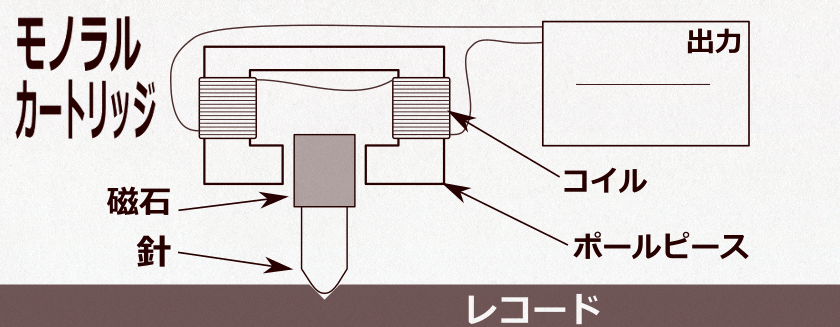
This is the mechanism for extracting audio signals from monaural records, which forms the foundation for stereo records.
■ The Structure of Stereo Record Grooves
In 1958, the RIAA (Recording Industry Association of America) adopted the 45-45 system for stereo records. This system maintained compatibility with existing monaural records, making the transition smooth. The principle itself was developed by Columbia Records in 1931, but it was difficult to achieve without high-quality vinyl, so the stereo transition was slightly delayed compared to other devices due to the status of the market. The diagram below shows the cross-section of the record groove. The grooves are at a 45-degree angle, with the audio signals etched into the left and right walls.
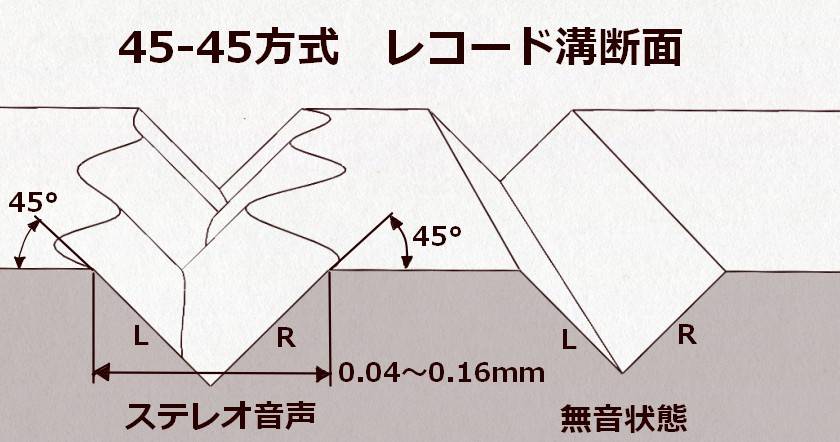
When viewed from above, the grooves described above appear as shown in the diagram below. In the absence of sound, all three grooves are clean parallel lines, but when audio signals are present, the lines become irregular.

The stylus traces these grooves to extract the two-channel signals, but how this extraction works is quite intriguing.
■ The Structure of a Stereo Cartridge
The internal structure of the cartridge is as shown below. The stylus moves up, down, left, and right. The diagram shows the state with no signal, where there is no change in the distance between the magnet and the pole piece, so no voltage is generated in the coil.
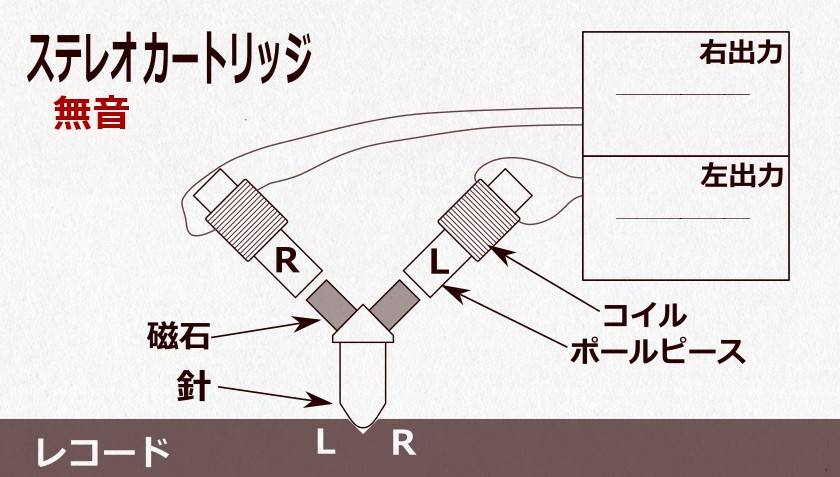
The diagram below shows the situation where only the right channel has sound. When the right groove changes, the distance between the magnet and the pole piece changes, generating voltage in the coil. Since there is no change in the distance between the magnet and the pole piece on the left side, it is not significantly affected, and little to no voltage is generated in the coil.
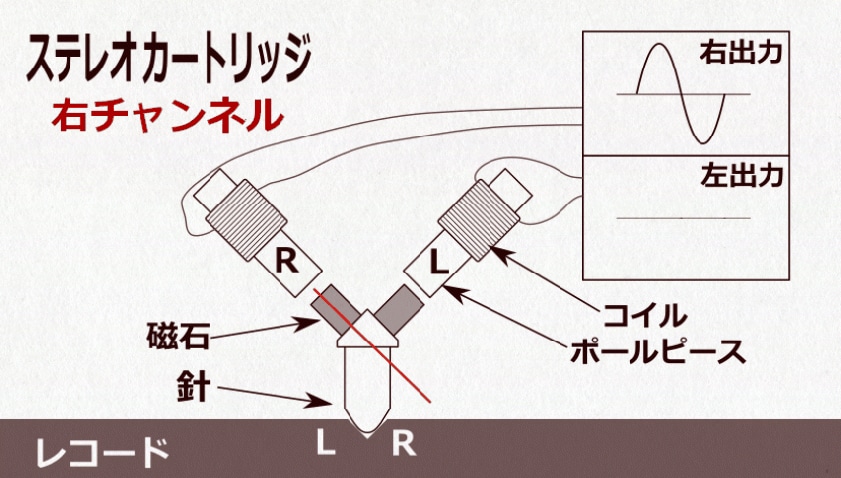
The same applies when only the left channel has sound.
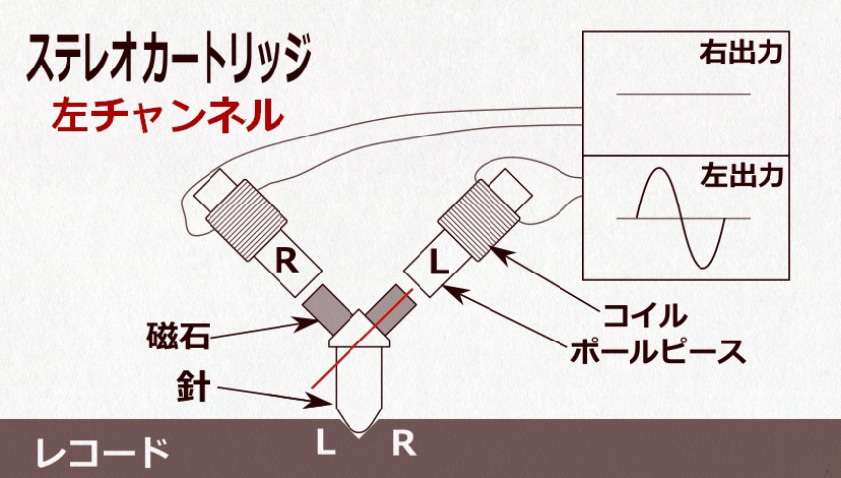
Finally, when both channels have sound, the diagram shows a vertical vibration. Since the distance between the magnet and the pole piece changes for both channels, electricity is generated in the coil for both.
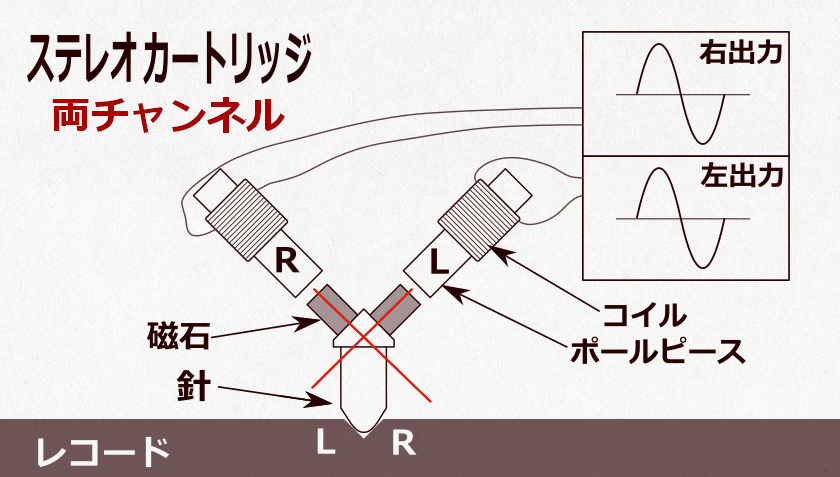
The above diagram is a simplified schematic for explanation purposes, but in reality, the structure is much more complex, and there are various types of cartridges. When looking at this principle, it becomes clear that achieving good separation of the left and right signals is a difficult task. Even so, the 45-45 system can be considered to be a clever design that allows for stereo playback while maintaining compatibility with monaural records and achieving stereo at a low cost.
■ RIAA Curve
The sound recorded on a record is not the original sound but it’s modified with the low frequencies reduced and the high frequencies boosted. The blue dashed line in the diagram below represents the RIAA curve. During playback, the signal is processed with an inverse RIAA curve (represented by the red line) using an equalizer, which restores the original sound.
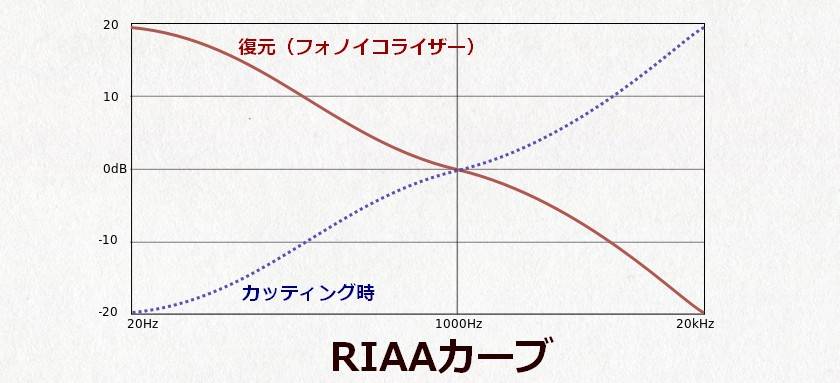
The reason for this is that if the low frequencies were left unchanged when making the record, the amplitude would become too large, causing issues like skipping (needle jumping) and a shorter recording time. Additionally, boosting the high frequencies helps improve the signal-to-noise ratio (S/N ratio).
The RIAA (Recording Industry Association of America) is an industry organization that was established in 1952 with the goal of standardizing record technology. They have contributed to the standardization of technology not only for records but also for cassette tapes, CDs, and other formats.
The “sound & person” column is made up of contributions from you.
For details about contributing, click here.


























